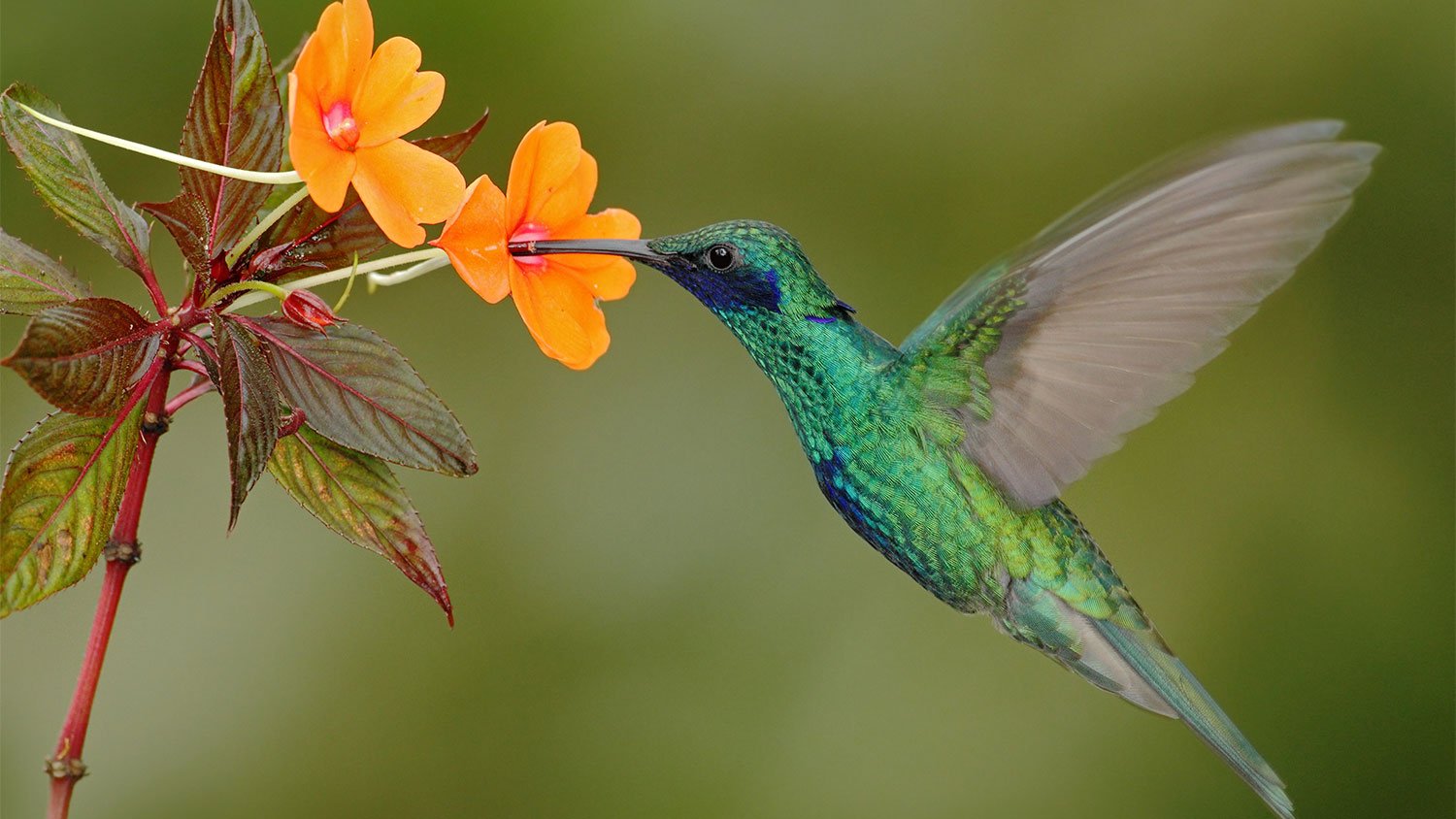
How much do hedges cost? Discover average hedge installation prices, key cost factors, and tips to save money on your landscaping project.
By attracting these critters, your tomatoes, greens, and carrots will thank you


You’ve balanced the soil pH, planted your heirloom vegetable seeds, and generously watered your garden. But without pollinators, your efforts to grow anything are for naught. Pollinators help plants reproduce, meaning you’ll have greater yields as the fruit of your labor. When you’re planning a vegetable garden that will attract the best pollinators, surely bees and butterflies will come to mind, but there are many types of pollinators out there. Here are eight common pollinators you’ll find in your vegetable garden from morning to night and are sure to turn your humble garden into a pollinator garden.
Certain flowers attract pests like bees, like marigolds and coneflowers, so you may want to plant some close to your vegetable garden. Bees help your garden grow and are hardworking pollinators, but there are far more types of bees out there that can help your garden than you might realize.
When you imagine a pollinator, the honeybee is likely the first thing to come to mind. This iconic pollinator is responsible for pollinating up to one-third of all crops consumed by people in the U.S. Honeybees love flowers, but you can also count on them to help pollinate your broccoli, squash, and bell pepper plants, just to name a few.
It’s hard not to squeal over these adorable, fuzzy bees, and fortunately, you may see a lot of them buzzing around your vegetable garden. Bumblebees can help pollinate cucumbers, squash, broad beans, eggplants, and even potatoes.
You’re probably familiar with the honey and bumble varieties, but there are also many native bees that can pollinate your garden and flowers. There are over 4,000 native bee species in the U.S. alone, including the world’s smallest bee (Perdita minima), sweat bees, carpenter bees, and more.

Having hummingbirds hovering around your garden brings delight, and while they’re known for seeking out and pollinating tubular flowers, they also improve the quality of your garden. As they travel from plant to plant, they help spread pollen, and hummingbirds also control garden pests by eating small insects that may be out to get your crops—unlike some species that snack on your garden’s common beneficial insects.
You know you have a healthy garden when you see butterflies floating around your blooming plants. While not as efficient at pollinating as bees might be, butterflies are essential for your veggie garden. These critters can pollinate herbs, like dill and cilantro, and a wide variety of vegetables, including celery, artichokes, lettuce, kale, and cauliflower, among many others. You’ll need to disperse some flowers around your vegetable garden to attract butterflies, so leave space for clusters of coneflowers, milkweeds, and yarrow.
It’s thrilling to see colorful butterflies flitting around the garden, but you should be just as excited to see moths hanging around. Moths pollinate at night, and while they prefer flowers, they can help pollinate your veggies, too, because they travel so much as they feed on a variety of plants. Experts are currently calling for more research on just how beneficial moths and other nocturnal pollinators can be for crops.
One drawback to moths is that their caterpillars, like the tomato hornworm, are well-known garden pests. You can plant yucca, gardenia, and morning glory in clusters further from your garden to better control the caterpillars.
Before you shoo away those flies, consider that they are likely hanging around to pollinate your carrot, parsley, onion, and fennel plants. There are many types of flies, some that even mimic the look and behavior of bees, and these flies are important and common pollinators. One study found that flies are the second-most important pollinators after bees, pollinating about 72% of 105 crops in the study.
Bats aren’t some spooky creature to be fearful of. In fact, these little furry friends are responsible for pollinating many of the foods you enjoy, including mangoes, peaches, almonds, bananas, as well as agave, used to make tequila. While bats are crucial for pollinating many commercial crops, particularly fruits, they can have an indirect benefit in your own garden.
Bats are excellent pollinators of fragrant, flowering plants like honeysuckle, evening primrose, and other night-blooming plants that will attract other pollinators. Plus, bats naturally control pests like mosquitos and cucumber beetles.
Beetles are an interesting case study. On the one hand, common pests like flea beetles or Colorado potato beetles can destroy your prized crops. But many beetles are actually helpful in the garden and will pollinate your vegetables. Generalist beetle species can pollinate crops like carrots and cabbage, and you can help attract these pollinators by planting magnolias and sunflowers.
Hear us out—while wasps can be frightening at first glance, they do incredible work in the garden, pollinating tomatoes, peppers, garlic, onions, leeks, chives, parsley, cilantro, carrots, and more. They also take care of common garden pests, like aphids and caterpillars.
Wasps are most famous for pollinating figs. Fig wasps can pollinate female figs, but they become trapped inside. Then, the fig breaks down the wasp into proteins that remain in the fig when consumed. So no need to be afraid of wasps in the garden—you may have already eaten a few!
From average costs to expert advice, get all the answers you need to get your job done.

How much do hedges cost? Discover average hedge installation prices, key cost factors, and tips to save money on your landscaping project.

Leveling your yard can help with drainage and prevent damage to your home. Learn the cost to level a yard and what factors can affect the price.
.jpg?impolicy=leadImage)
Landscaping your yard adds curb appeal and expands your home’s living space into the outdoors. Learn how much landscaping costs for various projects.

Landscaping costs can quickly get out of hand. Here’s what you can expect to tackle with a $5,000 landscaping budget to revamp your home’s exterior.

If you’re thinking about installing solar lights, you’re probably wondering how much sunlight is required for solar landscape lighting. Here’s the answer.

Preparing your pond for the winter can keep it healthy until springtime. Learn how to winterize a pond with this how-to guide.